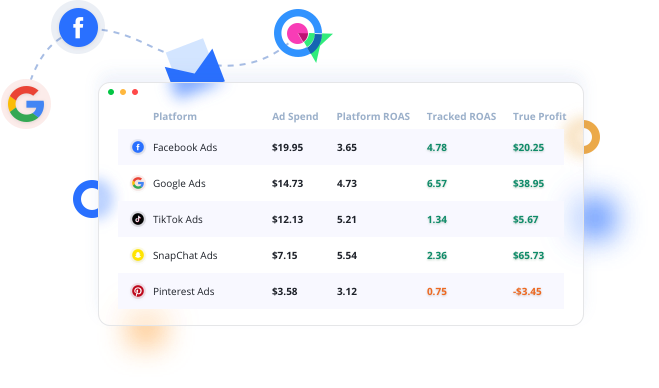
In the ever-evolving digital landscape, where attention spans are shorter and competition is fiercer, businesses are constantly seeking new ways to stand out. One of the most powerful tools available today is podcasts and voice content. As audio consumption continues to rise—especially with the growing popularity of smart speakers, voice assistants, and on-the-go listening—leveraging podcasts can significantly boost your organic reach.
This article will guide you through how to strategically use podcasts and voice content to grow your audience, enhance brand visibility, and drive engagement—all while staying ahead of the curve in 2025.
What Is Podcasts & Voice Content and Why It Matters
Podcasts are on-demand audio or video content that users can stream or download at their convenience. They cover a wide range of topics, from entertainment to education, and have become a go-to source for information and entertainment. Voice content, which includes spoken word recordings, audiobooks, and voice-activated ads, is also gaining traction, especially with the rise of smart home devices and mobile apps.
For marketers, these formats offer a unique opportunity to connect with audiences in a more personal and engaging way. Unlike traditional text-based content, podcasts and voice content create an emotional connection, making them ideal for building trust, authority, and loyalty.
According to a recent study, over 60% of U.S. consumers listen to podcasts regularly, and this number is expected to grow as more people adopt smart speakers and mobile streaming services. This trend underscores the importance of integrating podcasts into your marketing strategy.
How Podcasts & Voice Content Impact Organic Reach
Organic reach refers to the number of people who see your content without paid promotion. In 2025, with social media algorithms becoming more complex and user engagement metrics playing a larger role, it’s crucial to find content formats that naturally attract and retain attention.
Podcasts and voice content excel in this area because they:
- Build trust and credibility: Listeners often feel a stronger connection to hosts, leading to increased loyalty and sharing.
- Drive engagement: Audio content is often consumed during multitasking (e.g., commuting, exercising), making it more likely to be shared or recommended.
- Improve SEO: Optimized podcast titles, descriptions, and show notes can rank well in search engines, increasing discoverability.
- Expand reach through cross-promotion: Guest appearances on other shows or collaborations with influencers can expose your content to new audiences.
Additionally, voice content aligns with the growing trend of voice search, which is reshaping how users interact with search engines. By creating content that’s optimized for voice queries, you increase the chances of being featured in search results and voice assistant responses.
Step-by-Step Implementation Framework
To effectively use podcasts and voice content to boost organic reach, follow this structured approach:
1. Define Your Target Audience
Start by identifying who your ideal listeners are. Consider:
– Demographics: Age, location, interests.
– Pain points: What challenges do they face?
– Preferred content: Do they prefer educational, entertaining, or inspirational content?
Use tools like Google Analytics, social media insights, and surveys to gather data and create listener personas.
2. Choose the Right Format
Select a format that resonates with your audience:
– Interviews: Great for thought leadership and expert insights.
– Solo Shows: Ideal for building your brand voice.
– Roundtables: Encourage diverse perspectives.
– Narrative Storytelling: Builds emotional connections.
Choose a format that aligns with your goals and resources.
3. Create Engaging Content
Focus on delivering value through:
– Relevant topics: Address the questions and concerns of your audience.
– Conversational tone: Make your content relatable and easy to listen to.
– Consistency: Stick to a regular release schedule to build anticipation.
Include segments, guest interviews, and live episodes to keep your content fresh and varied.
4. Optimize for Search Engines
Ensure your podcast is easily discoverable by:
– Using clear, keyword-rich titles and descriptions.
– Adding show notes with links, transcripts, and relevant keywords.
– Submitting your podcast to directories like Apple Podcasts, Spotify, and Google Podcasts.
For voice content, optimize for long-tail keywords and natural language queries to improve visibility in voice search results.
5. Promote Through Cross-Promotion
Leverage partnerships and collaborations to expand your reach:
– Appear as a guest on other podcasts.
– Collaborate with influencers or industry experts.
– Share your content across social media platforms and email newsletters.
Cross-promotion helps tap into new audiences and builds credibility.
6. Track and Analyze Performance
Use analytics tools to measure the success of your efforts:
– Monitor downloads, listens, and engagement rates.
– Track website traffic generated by your podcast.
– Analyze which episodes perform best and adjust your strategy accordingly.
Tools like Podtrac, Chartable, and Google Analytics can provide valuable insights.
Real or Hypothetical Case Study
Let’s consider a hypothetical case of a small business owner, Sarah, who runs a boutique fitness studio in New York City. She wants to increase her organic reach and attract more local clients.
Sarah launches a weekly podcast called FitLife, featuring interviews with fitness experts, tips for beginners, and success stories from her clients. She optimizes the podcast with relevant keywords and shares it on social media, her website, and via email newsletters.
Over time, she sees a significant increase in website traffic, with many visitors coming from podcast listeners. She also notices that her Instagram and Facebook pages are getting more engagement, as listeners share episodes and tag her in posts.
By leveraging cross-promotion and guest appearances, Sarah expands her audience and builds a loyal community around her brand. Her podcast becomes a key driver of organic growth and customer acquisition.
Tools and Techniques for Podcasts & Voice Content
Here are some modern tools that can help you manage and grow your podcast and voice content:
- Anchor (by Spotify) – A free platform for recording, editing, and publishing podcasts.
- Audible – Ideal for creating and distributing audiobooks and voice content.
- Google Podcasts – A great directory for reaching a broad audience.
- Notion – Useful for organizing show notes, scripts, and episode ideas.
- Chartable – Provides detailed analytics to track performance and audience behavior.
- Grammarly – Helps ensure your script and show notes are error-free and engaging.
These tools streamline the process of creating, promoting, and analyzing your content, allowing you to focus on what matters most: delivering value to your audience.
Future Trends and AI Implications
As AI continues to evolve, its impact on podcasts and voice content will only grow. Here are some trends to watch:
- AI-generated content: Tools like Jasper and Copy.ai can help generate scripts and show notes quickly.
- Voice cloning: AI can replicate your voice for automated content creation.
- Personalized recommendations: Algorithms will increasingly suggest content based on user preferences and behavior.
- Multimodal search: Voice and visual search will merge, creating new opportunities for content discovery.
To stay ahead, invest in AI tools that enhance your workflow and adapt your content to emerging trends. Focus on authenticity, value, and engagement to maintain a strong connection with your audience.
Key Takeaways
- Podcasts and voice content are powerful tools for boosting organic reach and building brand loyalty.
- Define your audience and choose a format that aligns with your goals.
- Create engaging, value-driven content that resonates with your listeners.
- Optimize for search engines and voice search to increase discoverability.
- Promote through cross-promotion and collaboration to expand your reach.
- Track and analyze performance to refine your strategy and improve results.
- Stay ahead of AI trends to leverage new opportunities for growth.
By implementing these strategies, you’ll not only increase your organic reach but also build a loyal community that supports your brand and drives long-term success.
Meta Title: How to Use Podcasts & Voice Content to Boost Organic Reach in 2025
Meta Description: Learn how to use podcasts and voice content to boost your organic reach in 2025. Discover actionable strategies, tools, and techniques to grow your audience and increase brand visibility.
SEO Tags (5): podcasts, voice content, organic reach, digital marketing, content strategy
Internal Link Suggestions: Parameter #1: Content Marketing, Parameter #3: Social Media Engagement, Parameter #5: Voice Search Optimization
External Source Suggestions: https://www.podtrac.com, https://www.google.com/podcasts, https://www.hubspot.com









